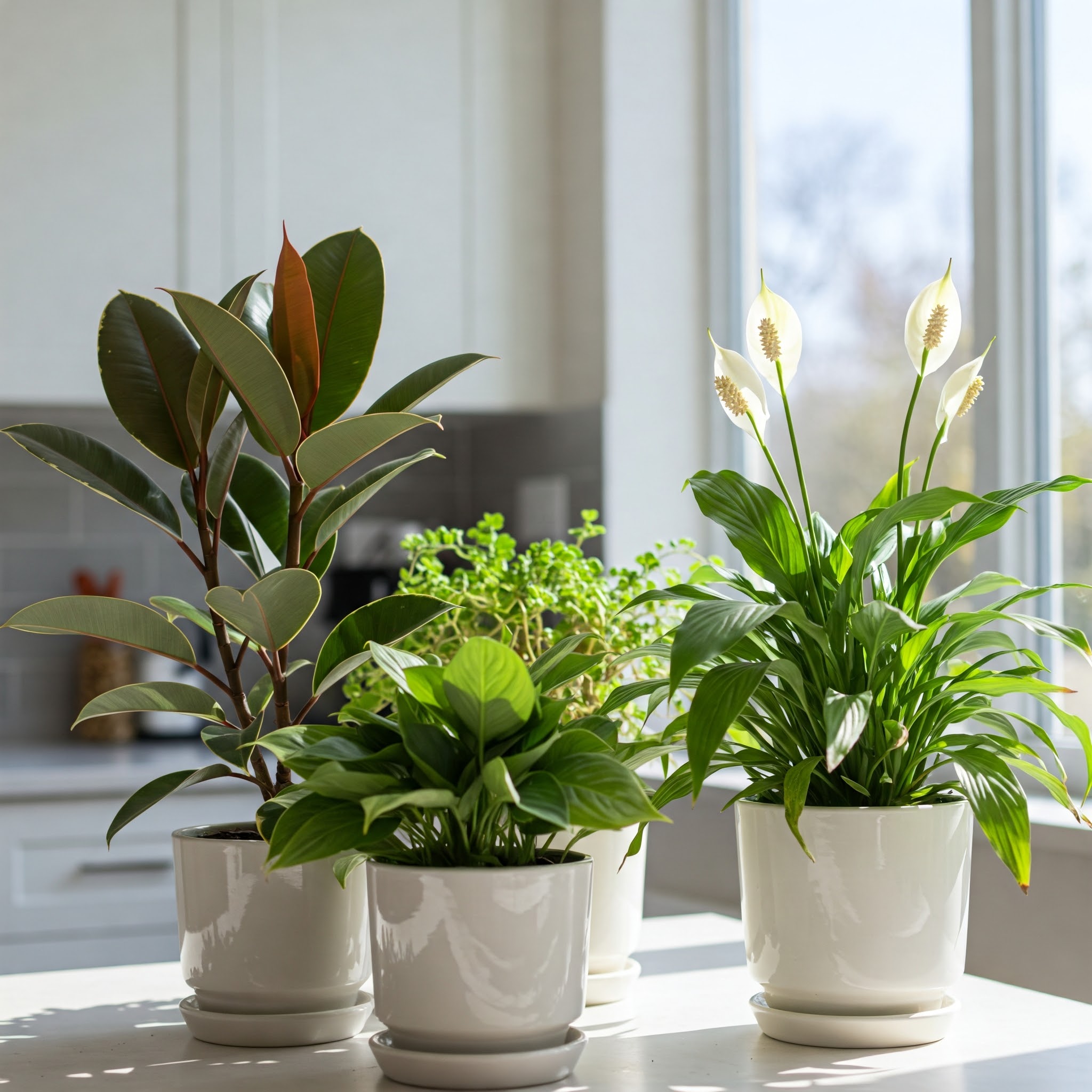Purifying the air with houseplants
- Info
- Apr 24, 2025
- 6 views

Breathe Easier: Purifying Your Indoor Air with the Power of Houseplants
In our increasingly sealed modern homes, indoor air can sometimes be more polluted than the air outside. Volatile organic compounds (VOCs) off-gassed from furniture, cleaning products, and building materials, along with other airborne particles, can contribute to a less-than-ideal indoor environment. While proper ventilation remains crucial, bringing the outdoors in with houseplants has long been touted as a natural way to help cleanse the air we breathe.
The concept gained significant traction with NASA's Clean Air Study in the late 1980s. This pioneering research explored how plants could be used to purify the air in closed environments, like space stations. The study identified several common houseplants capable of removing airborne toxins such as formaldehyde, benzene, and trichloroethylene.
The science behind this natural purification lies in the plant's ability to absorb these substances through their leaves and roots. Microorganisms in the soil also play a role in breaking down pollutants. This process, in conjunction with the plant's natural photosynthesis (which converts carbon dioxide into oxygen), contributes to potentially improved air quality.
While the extent to which houseplants can purify the air in a typical, non-sealed home environment is a subject of ongoing discussion and research (some studies suggest their impact might be less significant than natural ventilation), the aesthetic and psychological benefits of incorporating greenery into our living spaces are undeniable. Furthermore, even a modest contribution to removing pollutants is a welcome one.
Here are some of the houseplants that have shown promise in air purification studies and are popular choices for enhancing indoor air quality:
Stars of the Indoor Jungle for Cleaner Air:
- Snake Plant (Sansevieria): Known for its కోసం
Breathe Easier: Purifying Your Indoor Air with the Power of Houseplants
In our increasingly sealed modern homes, indoor air can sometimes be more polluted than the air outside. Volatile Organic Compounds (VOCs) off-gassed from furniture, cleaning products, and building materials, along with other airborne particles, can contribute to a less-than-ideal indoor environment. While proper ventilation remains crucial, bringing the outdoors in with houseplants has long been touted as a natural way to help cleanse the air we breathe.
The concept gained significant traction with NASA's Clean Air Study in the late 1980s. This pioneering research explored how plants could be used to purify the air in closed environments, like space stations. The study identified several common houseplants capable of removing airborne toxins such as formaldehyde, benzene, and trichloroethylene.
The science behind this natural purification lies in the plant's ability to absorb these substances through their leaves and roots. Microorganisms in the soil also play a role in breaking down pollutants. This process, in conjunction with the plant's natural photosynthesis (which converts carbon dioxide into oxygen), contributes to potentially improved air quality.
While the extent to which houseplants can purify the air in a typical, non-sealed home environment is a subject of ongoing discussion and research (some studies suggest their impact might be less significant than natural ventilation), the aesthetic and psychological benefits of incorporating greenery into our living spaces are undeniable. Furthermore, even a modest contribution to removing pollutants is a welcome one.
Here are some of the houseplants that have shown promise in air purification studies and are popular choices for enhancing indoor air quality:
Stars of the Indoor Jungle for Cleaner Air:
- Snake Plant (Sansevieria): Known for its striking, upright leaves, the snake plant is a low-maintenance favorite. It's been shown to help filter out formaldehyde and benzene.
Related Post
Hypothyroidism, also known as an underactive thyroid, is a condition in which the thyroid gland doesn’t produce enough of the thyroid hormones to function normally. Read our blog to find out more about the symptoms, causes and diagnosis of an underactive thyroid.
A migraine is a moderate or severe headache usually occurring on one side of the head. In this blog, we cover some of the causes and available treatments for migraines.
Want to improve your diet and health ? Here are our top five easy changes that you can make today for a healthier .
Understanding why acne occurs, what to do when you have acne, the treatment options available and when to seek medical intervention.
Did you know it’s hard to produce vitamin D in the winter? If you’re unsure about your vitamin D levels find out everything you need to know - from causes of a deficiency to optimal supplementation levels.
Iron plays an important role in carrying oxygen around your body and if your iron levels drop you may develop iron deficiency anaemia. It’s vital to speak to your GP if you experience chronic and excessive blood loss or develop other symptoms of low iron. Find out everything you need to know about managing your iron levels.


